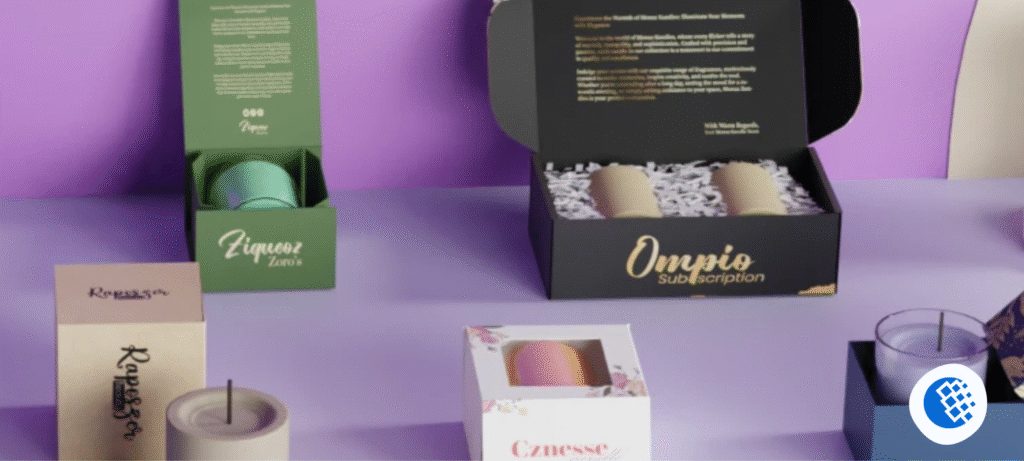A single fragrance can change the way a room feels within seconds. This is the reason why the fragrance of the house, such as “diffusers, candles, sprays, or plug-in”, is beyond adding a pleasing odor. It taps into our feelings, habits, and even memories.
Let us examine the insights from real-world fragrance marketing research and examples, and how psychology shapes the choices people make when buying home fragrance products.
Why Scents Affect Us so Strongly?
Our sense of smell is unique because it directly connects to the limbic system of the brain, which handles emotions and memories. This shortcut explains why a fragrance can immediately trigger nostalgia or set the mood. Even studies suggest that the fragrance of a pleasant background in retail stores makes people spend longer and spend more.
Importance of a “Good fit”
When choosing a fragrance, consumers are really choosing how they want to feel and how they want to be considered. Citrus scents indicate hygiene in the kitchen, floral scents suggest rest in a bedroom, and woody aroma focuses in offices. When scent, space, and self-image align well, it leads to satisfaction and makes fragrance a good fit. Hotels have fulfilled this strategy – the fragrance of Westin’s famous white tea is now synonymous with rest and luxury, and many guests buy it for their homes to recreate that feeling.
Protects the Packaging Promise
Before burning a candle or starting a diffuser, people form expectations based on packaging. Attractive jars, labels, and colors can make a fragrance feel rich. However, there is also a practical psychological role of packaging: protecting the scent. Candles, for example, can lose intensity if exposed to air, dust, or sunlight for too long. This is where custom candle boxes matter.
They do not just look elegant, but also help preserve the aroma so it smells as fresh as when it was first poured. For consumers, opening a box and finding the fragrance perfectly intact creates trust in the brand and improves the overall experience.
What Home Fragrances Learn From Scent Marketing?
The home fragrance market draws heavily from scent marketing research, which demonstrates how scent can impact mood and behavior.
Take airlines and hotels as examples of scent marketing. Singapore Airlines uses its signature scent across the cabins and features to strengthen its brand identity, while hotels spread a frequent aroma in lobbies and rooms to make their spaces more memorable. Guests often buy the same candles or scent marketing products for their homes to catch the same emotional relationship.
Restaurants apply similar strategies. They use food-related fragrances at the entrance or subtly in the waiting areas to improve marketing, hunger, and expectations. At home, consumers take a uniform approach, using sweet, gourmet notes in the kitchen or herbal scents in food places to strengthen the atmosphere.
One striking example came from Dunkin’ Donuts in Seoul, which released coffee aromas on buses alongside its jingle, leading to a measurable increase in sales. At home, pairing a morning coffee ritual with a matching candle or diffuser creates the same scent-behavior link, while neglecting such sensory branding opportunities can actually hurt your sales.
Comfort and Care: Fragrance in Healthcare
In hospitals and clinics, scent is used to reduce stress and support the patient’s comfort. For example, lavender and similar mixtures are often associated with calmness and relaxation. These applications of scent marketing in healthcare motivate consumers to choose a calming aroma for bedrooms or stressful times, strengthening psychological links between smell and wellness.
Format matters: candles, diffusers, and smart tools
After choosing a fragrance family, the format becomes the next major decision. Candles combine rituals and atmosphere with their soft glow, while reed diffusers provide low-maintenance, stable fragrance. Plug-ins and HVAC systems spread scents in large areas.
Rapid technology shapes preferences: A scent marketing app is connected to a programmable Scent Marketing Defuser, allowing users to schedule scent intensity or switch profiles daily. Convenience and control often guide these consumer decisions.
Why Simplicity Wins Often?
Both in public settings and at home, simple fragrance mixtures work better than complex ones. An extremely layered aroma can confuse the senses, while direct notes are easy to process, remember, and associate with a specific mood. Research suggests that the smell of a single, consistent environment performs better than complex mixtures – and the same applies in homes, where many products such as detergents, soaps, and candles can easily be present.
Consumers Give the Most Importance
Three factors contribute to consumer satisfaction: longevity (how long the fragrance is), throw (how well it fills a place), and security (especially important for families with children or pets). Transparent labeling and easy refills helped the brands to win loyalty by reducing estimates and frustration.
Smell as a Memory Anchor
There is a memory in the heart of buying fragrance. People use fragrance in a way for “Time Stamp” moments: pine for holidays, ocean notes for summer, vanilla for comfortable baking days. Over time, these scents become individual signatures that visitors immediately recognize. This is one of the strongest drivers behind the purchase of a repeating emotional relationship.
Final Thoughts
The selection of the scent of the home is not just about choosing a fragrance. It is about shaping the mood, making rituals, and preserving memories. The most effective options match the scent for space and lifestyle: calming lavender for comfort, citrus for energy, or vanilla for comfort. In hotels, restaurants, and healthcare, fragrance marketing examples can be so powerful when used with the right intentions





